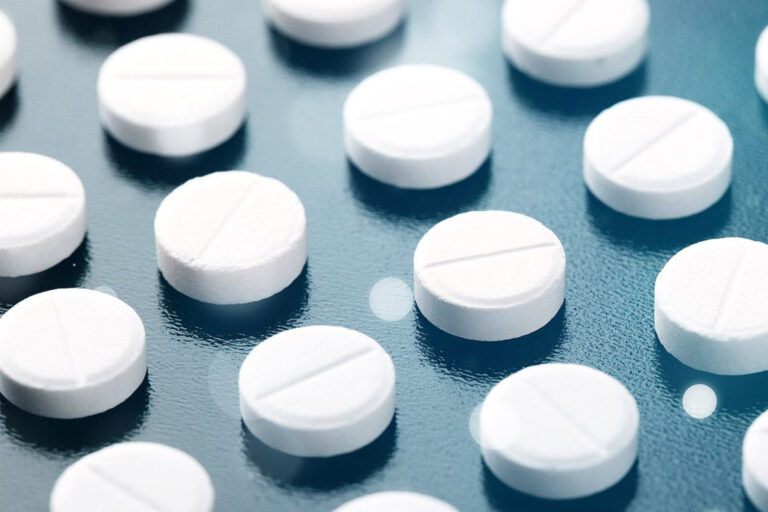Can Modafinil Help Manage Postural Orthostatic Tachycardia Syndrome (POTS)?
Living with postural orthostatic tachycardia syndrome (POTS) can be overwhelming. Patients experience symptoms such as dizziness, rapid heartbeat, fatigue, and “brain fog” when standing upright. While lifestyle strategies and medications are available, many people continue to struggle with fatigue and cognitive impairment. Recently, modafinil—a medication known for promoting wakefulness—has been studied as a potential option to ease some of these challenges.
Understanding Postural Orthostatic Tachycardia Syndrome
What Is POTS?
POTS is characterized by an increase in heart rate of at least 30 beats per minute within 10 minutes of standing (40 bpm in adolescents) without a drop in blood pressure. Symptoms must be present for at least six months for diagnosis (Raj, 2013).
Who Is Affected?
POTS affects an estimated 0.1–1% of the U.S. population, occurring more often in women of childbearing age. Many patients also have coexisting conditions such as migraine, irritable bowel syndrome, or chronic fatigue (Raj, 2013).
Why Does It Happen?
Different mechanisms contribute, including:
- Autonomic dysfunction – impaired regulation of blood vessel tone.
- Low blood volume – reduced circulating plasma volume.
- Hyperadrenergic activity – elevated norepinephrine levels leading to increased heart rate.
Current Management Strategies
Lifestyle Measures
- Increased fluids and salt to expand blood volume.
- Compression garments to reduce blood pooling in the legs.
- Graded exercise programs to improve cardiovascular fitness.
Medications
- Volume expansion: fludrocortisone, desmopressin.
- Heart-rate control: beta-blockers, ivabradine.
- Autonomic regulation: clonidine, methyldopa, pyridostigmine.
These treatments often reduce symptoms but may not fully address fatigue and concentration problems.
What Is Modafinil?
Modafinil is a non-amphetamine wakefulness-promoting agent. It is FDA-approved for narcolepsy, obstructive sleep apnea (as an adjunct), and shift work sleep disorder (U.S. Food and Drug Administration, 2015). Off-label, it has been used for fatigue in multiple sclerosis, depression, and other conditions (Greenblatt & Adams, 2023).
Mechanism: Modafinil works primarily by weak inhibition of dopamine reuptake, with additional effects on orexin and histamine pathways. Unlike amphetamines, it carries a lower risk of euphoria and abuse (Greenblatt & Adams, 2023).
Modafinil in POTS Management
Why Consider It?
Fatigue and “brain fog” are among the most disabling POTS symptoms. Traditional therapies focus on circulation and heart rate but often do little to improve alertness. Modafinil directly targets wakefulness and cognitive function.
What Does the Research Show?
- Randomized controlled trial: In 54 POTS patients, modafinil (100 mg) did not significantly increase standing heart rate compared to placebo. It modestly increased systolic blood pressure but did not worsen overall symptom burden (Kpaeyeh et al., 2014).
- Retrospective review: About two-thirds of patients reported improvements in fatigue and concentration with modafinil therapy (Vasavada et al., 2023).
Together, these findings suggest modafinil may benefit cognitive symptoms without aggravating tachycardia, though evidence remains limited to small studies.
Safety and Clinical Considerations
Dosing
- Standard dosing: 200 mg once daily in the morning (U.S. Food and Drug Administration, 2015).
- Some clinicians trial 100 mg initially, with cautious titration (Greenblatt & Adams, 2023).
Common Side Effects
(Observed in ≥5% of users; U.S. Food and Drug Administration, 2015).
Special Precautions
- Blood pressure: Monitor closely, particularly in patients with hyperadrenergic POTS.
- Pregnancy: Modafinil is not recommended; it carries potential risk of congenital malformations and reduces the effectiveness of hormonal contraceptives (U.S. Food and Drug Administration, 2015).
- Psychiatric effects: Use caution in patients with anxiety, mania, or psychosis (Greenblatt & Adams, 2023).
Limitations and Future Directions
Despite encouraging data, evidence for modafinil in POTS is still preliminary:
- Few trials: Only one randomized study with short-term outcomes (Kpaeyeh et al., 2014).
- Small samples: Most studies involve fewer than 100 patients.
- Long-term safety: Not well established in the POTS population.
Future research should include larger randomized trials, long-term monitoring, and stratification by POTS subtype to identify which patients benefit most.
Conclusion
Modafinil shows promise as an adjunctive therapy for fatigue and cognitive impairment in postural orthostatic tachycardia syndrome. Current evidence suggests it does not significantly worsen tachycardia, though it may modestly raise blood pressure. Given potential risks—including pregnancy safety and side effects—its use should be individualized and closely supervised by a healthcare provider.
References
- U.S. Food and Drug Administration. (2015). PROVIGIL® (modafinil) tablets, for oral use, C-IV [Prescribing information]. U.S. Department of Health and Human Services. https://www.accessdata.fda.gov/drugsatfda_docs/label/2015/020717s037s038lbl.pdf
- Greenblatt, K., & Adams, N. (2023, February 6). Modafinil. In StatPearls [Internet]. StatPearls Publishing. https://www.ncbi.nlm.nih.gov/books/NBK531476/
- Kpaeyeh, J., Jr., Mar, P. L., Raj, V., Black, B. K., Arnold, A. C., Biaggioni, I., Shibao, C. A., Paranjape, S. Y., Dupont, W. D., Robertson, D., & Raj, S. R. (2014). Hemodynamic profiles and tolerability of modafinil in the treatment of postural tachycardia syndrome: A randomized, placebo-controlled trial. Journal of Clinical Psychopharmacology, 34(6), 738–741. https://doi.org/10.1097/JCP.0000000000000221
- Vasavada, A. M., Verma, D., Sheggari, V., Ghetiya, S., Chirumamilla, P. C., Kotak, R. A., Mahapatra, S. S., Patel, T., & Jain, M. (2023). Choices and challenges with drug therapy in postural orthostatic tachycardia syndrome: A systematic review. Cureus, 15(5), e38887. https://doi.org/10.7759/cureus.38887
- Raj, S. R. (2013). Postural tachycardia syndrome (POTS). Circulation, 127(23), 2336–2342. https://doi.org/10.1161/CIRCULATIONAHA.112.144501








